With Charlie Harper
Many American cities have nicknames. Among the best known are The Big Apple (New York City), City of Angels or La-La Land (Los Angeles), The Windy City (Chicago), The City of Brotherly Love (Philadelphia), The Hub (Boston), Motown (Detroit), The Queen City (Cincinnati), Charm City (Baltimore), Big D (Dallas), The Mile-High City (Denver) and the City by The Bay or just The City (San Francisco). It might be illustrative that the national capital city of Washington DC really doesn’t have a nickname to rival the others, unless of course you just call it The Swamp.
But one American city nickname stands above all the rest, because it manages to capture so perfectly the essence of the city. And it’s not even the only moniker for the largest city in its state and region. Also known as The Crescent City, Nawlins or even NOLA, Louisiana’s gateway is a lot of things to a lot of people. But the best of all its nicknames is The Big Easy, because New Orleans is, well, easy.
Now one year after celebrating its 300th anniversary, New Orleans is in some ways an antidote to what ails the United States. Whereas New York and Washington thrum to the beat of angry honking horns on their streets and the pinched faces of high achievers on their sidewalks, New Orleans is notable for its quiet and serenity.
Its classic streetcar line is the oldest continuously operating line in the world. But although the St. Charles Line’s charming old school cars are often jammed with tourists, commuters, domestic workers in the city’s high-end Garden District, university students from Tulane and Loyola and locals taking the easiest route from point A to point B, both passengers and drivers consistently display a pleasant tolerance for the chaos.
There just doesn’t seem to be any rush.
And after the kids are off to school and their parents depart for work, neighbourhoods very close to downtown are tranquil in the blessed post-Mardi Gras stillness and pre-summer low humidity in New Orleans. Algiers, the working-class community that is the western terminus of the ferry across the Mississippi River from the foot of Canal Street, is almost eerily quiet at midday, the peace punctured only by the distant grinding of a municipal garbage truck.
The working-class parts of the lower Garden District are similarly tranquil. Nearly everyone who is out and about is having a coffee and perhaps a knock-off beignet in a local place. A Hollywood feature film, “Filthy Rich,” has just finished shooting in a handsome antebellum mansion on Jackson Street. “That’s (US President) Andrew Jackson, not (Civil War Confederate hero) Stonewall Jackson,” a local reminds a visitor. New Orleans removed a prominent statue of Robert E Lee a couple of years ago. There wasn’t too much fuss about it.
One of the world’s cities most vulnerable to the inevitability of global warming and the rise of the oceans, sitting astride the angry serpentine might of the continent’s most potent river system, still not recovered from the devastation of Hurricane Katrina, New Orleans is a welcome reminder that resilience and perspective can still overcome adversity.
Breaking corruption
Politics is often about transitions, and there is sometimes irony as developments unfold. This week two prominent American cities were reminded of that. In Chicago, now only the nation’s third-largest city and likely soon to be displaced by Houston for even that position, a former federal prosecutor named Lori Lightfoot, pictured, was chosen as the city’s first black female mayor. She prevailed in a run-off election over another African-American woman. “We can and we will break this city’s endless cycle of corruption,” Lightfoot declared.
Chicago has been wracked by criminal violence as well as corruption in recent years. So too has Baltimore suffered, with five different police chiefs in the past five years proving to be an insufficient response. Now comes a further indignity. Incumbent black, female Baltimore mayor Catherine Pugh was forced to take a “leave of absence” in the wake of revelations she has accepted almost $700,000 from companies that do business with her city. The money was for copies of her self-published children’s books in a series called “Healthy Holly.” It may take Baltimore, a city that nurtured the political careers of both Nancy Pelosi and current House Trump tormenter Elijah Cummings, a while to recover.
Don’t back my tips
Last week we confidently forecast US college basketball’s Final Four would be Duke, North Carolina, Purdue and Florida State. How’d that work out? The actual Final Four are Michigan State, Virginia, Texas Tech and Auburn. Last weekend’s regional finals were a timely reminder never to bet with money you need, since few predicted the outcomes of the games. Still, we soldier on.
This weekend’s match-ups in Minneapolis feature Auburn, the only team to ever beat basketball gods Kansas, North Carolina and Kentucky in the same NCAA tournament. Coached by amiable, iconoclastic, sometimes rule-breaking outsider but consistently successful Bruce Pearl, pictured, Auburn enters as a five-point underdog to the only remaining top seed, Virginia. Tony Bennett’s Cavaliers are a top defensive team every year, and should get past a Tiger squad clearly weakened by the loss through injury of Chuma Okeke.
The other game showcases Michigan State, led by Hall of Fame coach and occasional temper tantrum tyrant Tom Izzo. The Spartans are led by indominable guard Cassius Winston, who reminds some of UConn hero Kemba Walker, who simply would not let his team lose as the Huskies won the 2011 national championship. MSU is a 2.5-point favourite over upstart Texas Tech and its silky star Jarrett Culver. There’s a lot of conventional wisdom around this game, virtually all of it around the experience of both Izzo and his not one-and-done group of seasoned players. We’re buying it.
In the final, Michigan State will likely be the betting favourite, for all the reasons above. But it helps to remember UVA was, just last year, the only top seed in history to lose its first tournament game. The players and coach who suffered that humiliation are still around. Payback is sweet. Virginia to win it all.
There’s still a job to do
Many observers believe the critical element of post-World War II stability and the defeat of Soviet Communism was the North Atlantic Treaty Organization (NATO), now celebrating its 70th anniversary in Washington, where the original alliance treaty was signed in 1949. It’s probably fitting that the headline issues facing the gathered leaders mostly concern the successor state to the Soviet Union. No longer motivated by ideology but with still the paranoid outlook of the world’s largest, sprawling empire, Russia looms again as NATO’s main preoccupation.
Among the platitudes emerging so far from the US side are the following: “We have a very strong foundation of shared democratic values. The (NATO) alliance has brought peace, stability and prosperity to its citizens. That is a cause to celebrate. But (NATO) is also adapting to ensure the future.”
Part of that future would be bolstered, in the American view, by more than $100 billion in new defence spending commitments by non-US alliance members by the end of next year. As Europe grapples with Brexit, Italian commitment to China’s Belt and Road initiative and internal strains, one can only wish NATO good luck. It will be needed.
• As every baseball season begins, fans in northern cities wonder anew why in the world MLB persists in scheduling so many late March and early April regular season games in cities like Cleveland, Detroit, Minneapolis and Chicago, where the air temperatures often don’t top the freezing mark and the winds of winter have not yet completely dissipated. Surely there are enough teams in cities with either balmy temperatures or domed stadiums to accommodate a more fan (and player) friendly environment for these early games.
Ah, but there is an insuperable factor on the other side of the scale on this issue: Tradition. No professional sport reveres tradition like baseball. So fans freeze and players risk injury all over again.
Thus it was that Nationals vans braved cold and wind on Tuesday to watch the latest instalment of the return of the prodigal son. $330-million-man Bryce Harper returned to Washington for the first time as a member of the division rival Philadelphia Phillies. Nats ace Max Scherzer, a $30-million per year pitcher himself, struck out Harper the first two times they faced each other. But Harper, pictured, later homered and the Phillies won fairly easily. It’s really early, but by the end of the long season, this game might look significant.
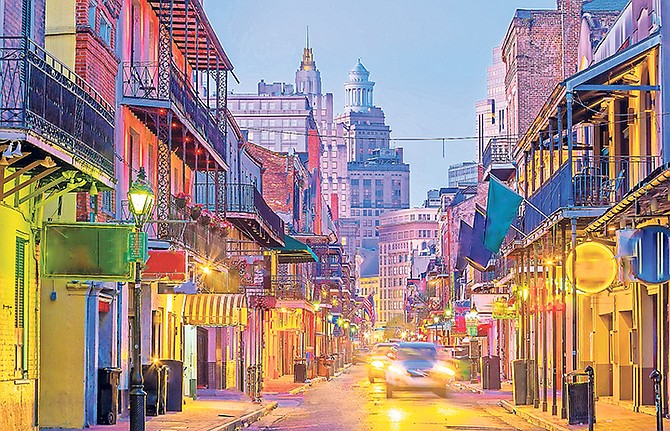
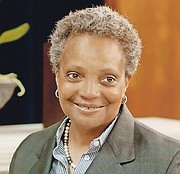
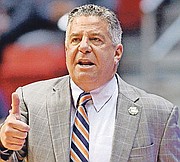
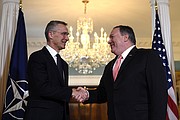
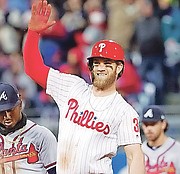




Comments
Use the comment form below to begin a discussion about this content.
Sign in to comment
Or login with:
OpenID